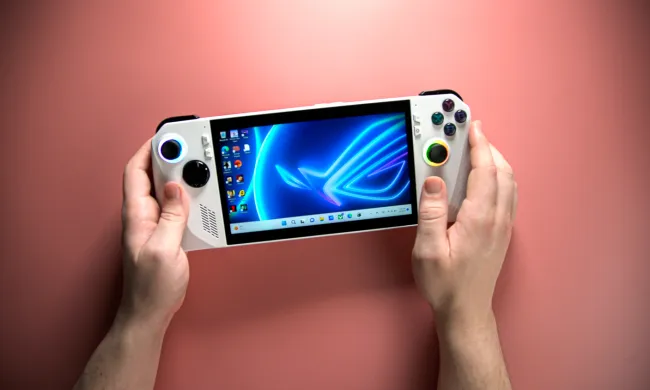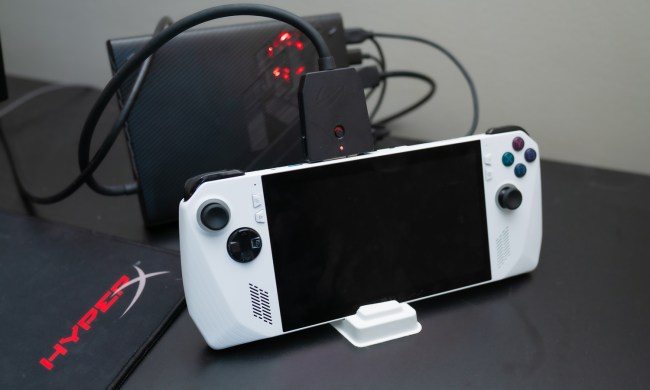
“There’s a slight overhead due to encoding and decoding when connecting only via Thunderbolt 3, XG Station 2 allows you to connect an additional USB Type-B cable to help compensate and push the performance further,” the company said. “The performance can then be pushed up to within 10 percent of the graphics card’s maximum performance.”
In addition to Thunderbolt 3 connectivity, the ROG XG Station 2 also comes packed with four USB 3.0 ports, a gigabit Ethernet port, and the USB Type-B port located on the back. Obviously, the video output ports will depend on the installed graphics card, which can be any full-length graphics solution provided by Nvidia or AMD that measures up to 2.5 slots wide.
The new graphics station features its own internal 80 Plus Gold certified power supply, providing up to 500 watts of power to the installed graphics card. The enclosure is also capable of charging compatible laptops and USB-connected devices up to 100 watts through the Thunderbolt 3 port. That means it exceeds the maximum power requirement of Nvidia’s GeForce GTX 1080 graphics card while simultaneously charging devices.

The ROG XG Station 2 supports the company’s Aura Sync platform that is complemented by a window on the side of the unit. The interior includes LEDs and a plasma tube to light up the innards, which will sync their colors and effects with Asus ROG cards that support Aura RGB lighting and Aura Sync. Users can download a free tool to customize and synchronize the RGB lighting effects of both the card and external station.
Right now, there are only five notebooks on the market that are compatible with the new graphics station. Three are with the company’s family of ROG Gaming laptops, and two reside in its Transformer Book family of 2-in-1 PCs. The external station will eventually be compatible with ZenBooks too although Asus currently isn’t listing specific models. Here are the compatible units thus far:
| ROG Gaming Series | Transformer Book Series |
| ROG G701VI | T303UA |
| ROG GL502VM | T305CA |
| ROG GL702VM |
Given that the ROG XG Station 2 is an external enclosure for graphics cards, that is all there is to tell regarding details. It seems perfect for the latest offerings from Nvidia and AMD and all the cards stemming from their partners. Naturally, Asus would like to see customers shove its own GeForce and Radeon cards into the unit, but any manufacturer’s card should do.
As seen above, the drawback is that the external station is limited to a handful of devices for now. It’s also not slated to hit the market until the beginning of 2017 for an unknown price. That said, given that customers will be required to supply their own graphics cards, the combo could get a little pricey in the end.



